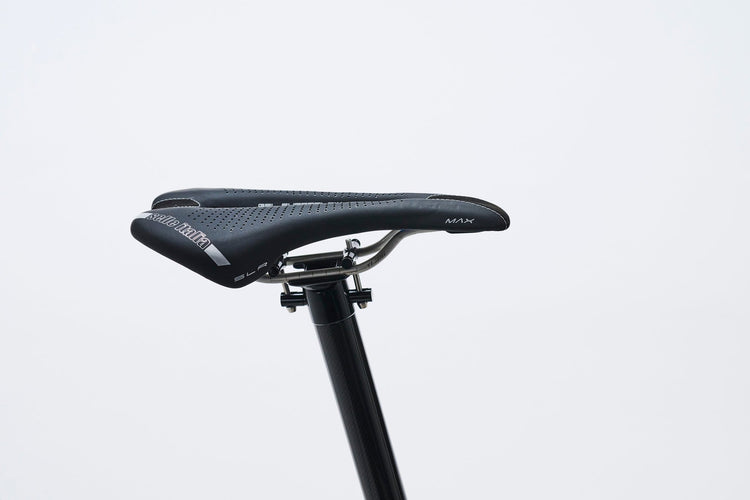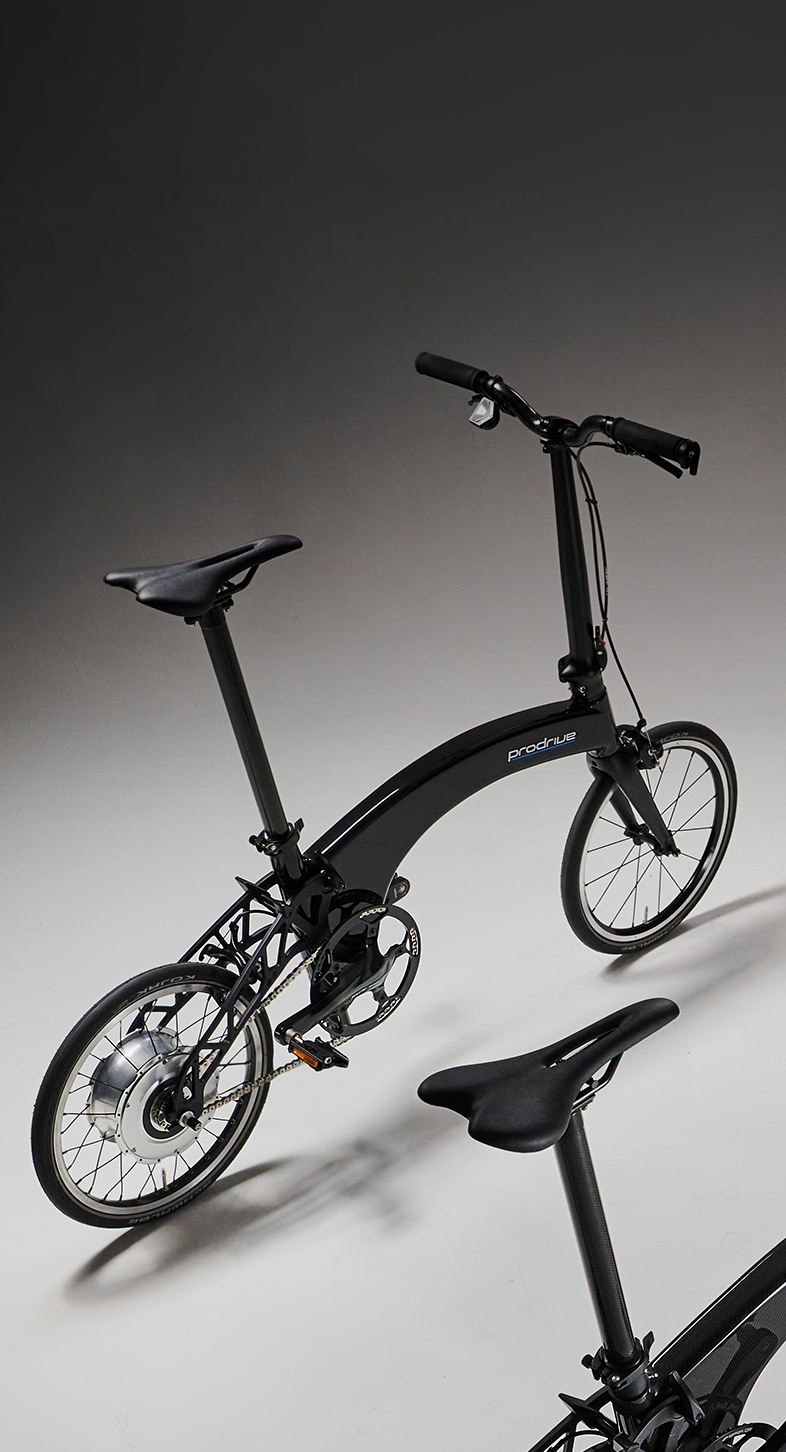You might also like

Brooks Cambium Rubber Grips

Phone holder

Prodrive Folding Bike Carry Bag

Schwalbe Marathon Tire Swap

Spare Single Speed Wheel

Men's Gel Saddle

Women's Gel Saddle

21 April 2023
Comprehensive Buyer's Guide: Belt vs Chain Drive Bikes
Belt drive bikes are revolutionising the way we cycle. Unlike traditional chain drive bikes, which use a chain to transfer power from the pedals to the rear wheel, belt drive bikes use a carbon fibre reinforced belt. This belt offers a number of advantages over traditional chains, including less maintenance and a cleaner operation. However, belt drive bikes also have drawbacks, such as a limited gear range (unless you're shopping with Hummingbird) and higher cost.
We understand that when it comes to choosing a bike, the decision can be overwhelming, especially when deciding between belt-drive and chain-drive multi-speed bikes. That's why we've created this comprehensive buyer's guide to help you make an informed decision. By comparing and contrasting the two, you can determine which type of bike is best for your needs.
Belt-drive vs. chain-drive: A side-by-side comparison
The debate between belt-drive and chain-drive bikes has been ongoing for years. Belt-drive bikes use a carbon fibre belt to transfer power from the pedals to the wheels, while chain-drive bikes use a metal chain. The main differences between the two are their maintenance requirements, durability, and cost.
This comparison table outlines the key features of Hummingbird's multi-speed belt-drive bike and our multi-speed chain bike, allowing for transparent side-by-side comparison.
If you like to weigh up your options before making a decision, the table below should allow you to identify the right fit for your cycling needs with ease.

Advantages of belt-drive bikes
Belt-drive bikes offer many advantages over their chain-driven counterparts. Firstly, they require less maintenance, making them a convenient option for those who don't have the time or desire to maintain their bike regularly.
Secondly, belt-drive bikes offer a cleaner operation, so you don't have to worry about getting grease on your clothes. Belt-drive bikes are also much quieter than chain-drive bikes, making for a more pleasant ride. These benefits make belt-drive bikes an ideal choice for commuters and casual riders:
- Practically maintenance-free
- Lasts up to 3-5 times longer than chain drives
- Cleaner and doesn't require lubrication
- Quieter operation, almost silent compared to chains
- Mechanically simpler, with no moving parts and no pins or rollers to wear out
- Less loss of efficiency over time, with no stretching or wearing like chains
- Straight driveline, resulting in more efficient power transfer and less wasted energy
- No corrosion due to modern synthetic materials used
- More efficient than chains at higher power outputs
- Modern and high-end option for cyclists who like cutting-edge equipment
Disadvantages of belt-drive bikes
However, belt-drive bikes do have features that for some riders, might be considered as drawbacks. They can have a limited gear range, and they are often more expensive than chain-drive bikes:
- Belt-drive compatible frames must have a split in the rear triangle, requiring a stiff frame to avoid belt skipping and a belt tensioner.
- Belt drives are more expensive than chain drives
- Repair costs can amount to hundreds
- Spare parts for belt drives can be harder to find in developing or remote areas.
- Belt drives are less efficient at low power inputs and put more stress on bottom bracket and rear hub bearings.
- Failure such as a damaged or cut belt, requires a replacement and cannot be partially-fixed on the spot like a chain.
- Belt lengths are set and not adjustable, limiting gear ratio, tire size, and rim width.
- Most full-suspension bikes are not compatible with belts
Advantages of chain-drive bikes
On the other hand, chain-drive bikes offer a wider gear range, making them an excellent choice for cyclists who need to tackle steep hills and varied terrain. They are also typically less expensive than belt-drive bikes, which makes them a more budget-friendly option for those who don't want to break the bank:
- Chains are cheaper to replace than belts
- Easier to find replacement parts for chains than for belts
- Compatible with a wider range of bike frames
- Can be used with most full-suspension bikes
- Chain drives offer more flexibility in terms of gearing options, as chains can easily be swapped out for different sizes to adjust gear ratios.
- Chains are easier to find and replace than belts, as they are widely used in many industries and available in most bike shops.
- Chain drives are less expensive than belt drives, as they do not require a special frame or expensive internal gear hub.
- Chains can handle a wider range of power inputs than belts, making them a better option for high-performance or racing bikes.
- Chains are more durable than belts in certain conditions, such as extreme cold or wet weather, where belts can freeze or slip.
Disadvantages of chain-drive bikes
Regarding maintenance time, chain-drive bikes require more TLC than belt-drive bikes. The chain will need cleaning, lubricating and occasionally changing. Chain-drive bikes can also be messier to operate, as the chain can easily pick up dirt and debris, making it more challenging to keep the bike clean, and maybe not ideal for those morning commuters cycling in their work suit.
- Lose efficiency over time
- Heavier and dirtier than belts
- Louder than belts
- More mechanically complex
- Chains require regular maintenance, including cleaning and lubrication, to prevent wear and reduce friction. This can be time-consuming and messy.
- Chains are heavier than belts, adding extra weight to the bike and potentially slowing down performance.
- Chains are louder than belts and can create a lot of noise if not properly maintained or if worn out.
- Chains have a shorter lifespan than belts and may need to be replaced more frequently, depending on usage and maintenance.
- Chains can create friction in the drive system when running at an angle, which reduces efficiency and can cause wear on the chain and gears.
A comparative overview
Belt drives are a relatively new technology in the world of cycling.
Their strong and durable materials are intended to last without high maintenance, unlike chain drives that require consistent lubrication and cleaning. The increased cleanliness of belt-drive bikes is a particular advantage to cycle commuters, who don't want to dirty their work clothes on excess chain grease or lubrication.
There are also far fewer moving parts on belt-drives than chain-driven, lessening the overall ongoing maintenance. In contrast, chain bikes use many moving parts that need your care and attention to ensure it stays free of dust, moisture, mud and excess lubrication.
Another advantage of a belt drive is its longevity. With fewer moving parts comes limited wear, so a belt drive typically lasts longer than a traditional chain, ridden under the same conditions.
Belt drives do cost more upfront than chain drive systems, and there are inevitably fewer bike shops to service them or sell spare parts. When something goes wrong, the bike might be out of action longer than it would be with a chain drive system, and repair on the road is achievable with a chain drive system.
The chain drive has been around so long that most bike designs are made with this system in mind. Fitting or repairing any of the components in a chain drive requires little planning, and plenty of qualified specialists to take on the job. Spare parts, replacement parts, and servicing for chain drives are readily available, and all bike shops will usually be able to get hold of any chain, lubricant, sprocket or chainring.
Choosing the bike most suited to you is a personal decision that only you can make based on your preferences and needs.
If you're a casual rider or commuter who values convenience and cleanliness, you might prefer a belt-drive bike. If you need a more universally-adaptable bike and are willing to invest more time and effort into maintenance, a chain-drive bike may be a better choice.
At Hummingbird Bikes, we offer both types of bikes, so no matter which option you choose, you can trust that you're getting a high-quality, lightweight folding bike that is built to last.

Prodrive Folding
Electric Bike
The ultimate city bike is here.
Latest from
the magazine














